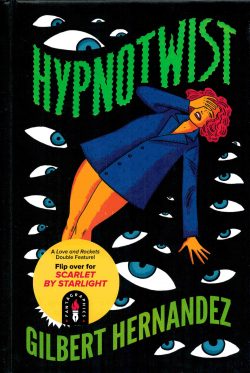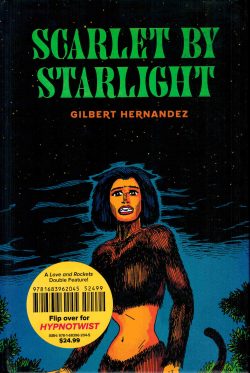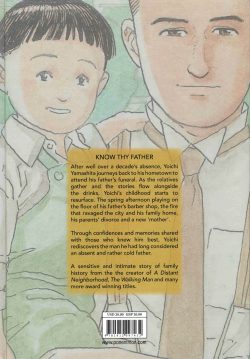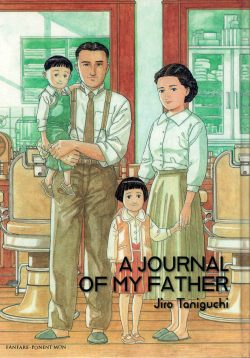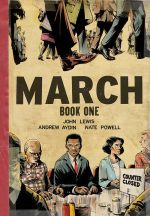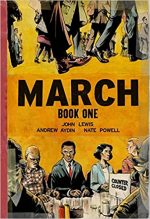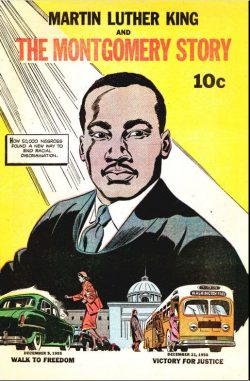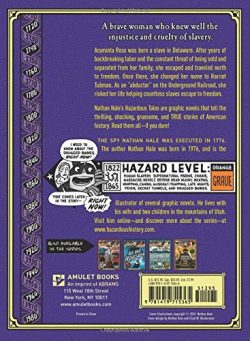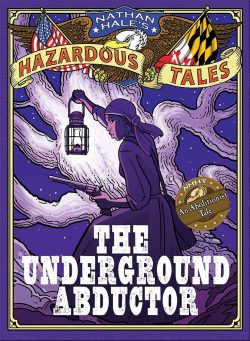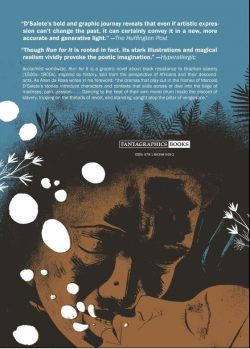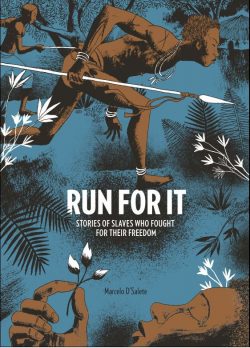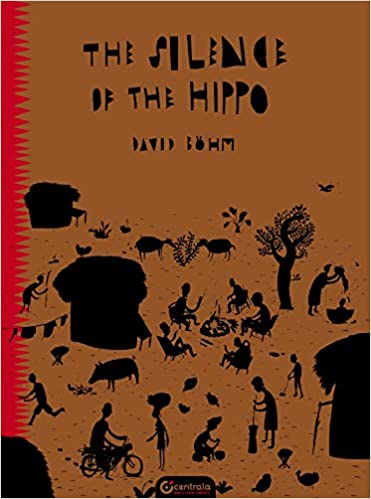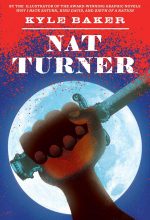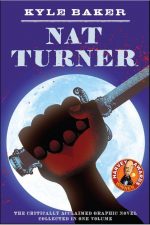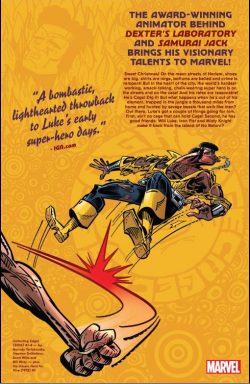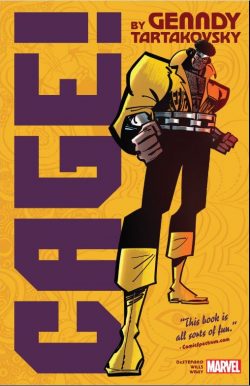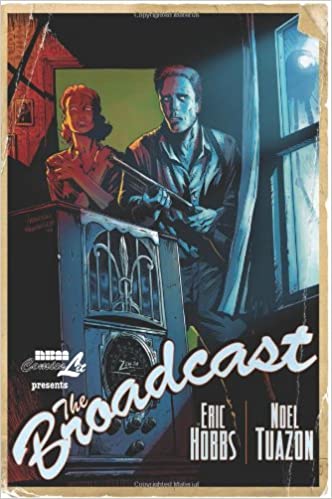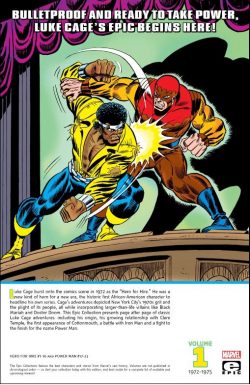
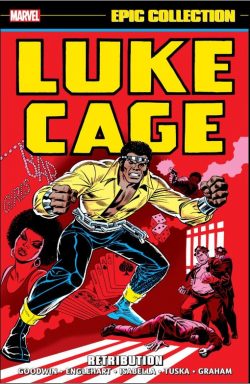
By Archie Goodwin, Steve Englehart, Tony Isabella, Len Wein, Gerry Conway, Billy Graham, George Tuska, Ron Wilson & various (Marvel)
ISBN: 978-1302928315 (TPB)
In 1968 the consciousness-raising sporting demonstration of Black Power at the Olympic Games politicised a generation of youngsters. By this time a few comics companies had already made tentative efforts to address what were national and socio-political iniquities, but issues of race and ethnicity took a long time to filter through to still-impressionable young minds avidly absorbing knowledge and attitudes via four-colour pages that couldn’t even approximate the skin tones of African-Americans.
As with television, breakthroughs were small, incremental and too often reduced to a cold-war of daringly liberal “firsts.†Excluding a few characters in Jungle comic-books of the 1940s and 1950, Marvel clearly led the field with a black soldier in Sgt. Fury’s Howling Commandos team – the historically impossible Gabe Jones who debuted in #1, May 1963. So unlikely a character was ol’ Gabe that he was re-coloured Caucasian at the printers, who clearly didn’t realise his ethnicity, but knew he couldn’t be un-white.
He was followed by actual negro superheroes Black Panther in Fantastic Four #52 (July 1966), and the Falcon in Captain America #117 (September 1969).
America’s first black hero to helm in his own title had come (and gone largely unnoticed) in a little remembered or regarded title from Dell Comics. Debuting in December 1965 and created by artist Tony Tallarico and scripter D.J. Arneson, Lobo was a gunslinger in the old west, battling injustice just like any cowboy hero would.
Arguably a greater breakthrough was Joe Robertson, City Editor of the Daily Bugle; an erudite, brave and proudly ordinary mortal distinguished by his sterling character, not costume or skin tone. He first appeared in Amazing Spider-Man # 51 (August 1967), proving in every panel that the world wouldn’t end if black folk and white folk occupied the same spaces…
This big change slowly grew out of raised social awareness during a terrible time in American history; yes, even worse than today’s festering social wound, as typified by cops under pressure providing no answer to seemingly constant Black Lives Matter events. Those tragedies occur in the UK too, so we have nothing to be smug about either. We’ve had race riots since the Sixties which left simmering scars that only comedians and openly racist politicians dare to talk about. Things today in don’t seem all that different, except the bile and growing taste for violence is turned towards European accents, or health workers as well as brown skins…
As the 1960s became a new decade, more positive and inclusive incidences of ethnic characters appeared in the USA, with DC finally getting an African-America hero in John Stewart (Green Lantern #87 December 1971/January 1972) – although his designation as a replacement Green Lantern might be construed as more conciliatory and insulting than revolutionary.
The first DC hero with his own title was Black Lightning. He didn’t debut until April 1977, although Jack Kirby had introduced Vykin in Forever People #1 and the Black Racer in New Gods #3 (March and July 1971) and Shilo Norman as Scott Free‘s apprentice (and eventual successor) in Mister Miracle #15 (August 1973).
As usual, it took a bold man and changing economics to really promote change. With declining comics sales at a time of rising Black Consciousness, cash – if not cashing in – was probably the trigger for “the Next Step.â€
Contemporary “Blaxsploitation†cinema and novels had fired up commercial interests throughout America, and in that atmosphere of outlandish dialogue, daft outfits and barely concealed – if justified – outrage, an angry black man with a shady past and apparently dubious morals must have felt like a sure-fire hit to Marvel’s bosses.
Luke Cage, Hero for Hire launched in the summer of 1972. A year later, Black Panther finally got his own series in Jungle Action #5 and Blade: Vampire Hunter debuted in Tomb of Dracula #10.
This stunning trade paperback/digital compendium collects the first 23 issues of the breakthrough series: including the moment the series was thematically adjusted to become Luke Cage Power Man and cumulatively spanning June 1972 to February 1975.
The saga begins with Lucas, a hard-case inmate at brutal Seagate Prison. Like all convicts he says he was framed and his uncompromising attitude makes mortal enemies of savage, racist guards Rackham and Quirt, whilst not endearing him to the rest of the prison population such as genuinely bad guys Shades and Comanche either…
‘Out of Hell… A Hero!’ was written by Archie Goodwin and illustrated by George Tuska & Billy Graham – with some initial assistance from Roy Thomas and John Romita Senior – and sees a new warden arrive promising to change the hell-hole into a proper, correctly administered correctional facility. Prison doctor Noah Burstein convinces Lucas to participate in a radical experiment in exchange for a parole hearing, having heard the desperate con’s tale of woe…
Lucas had grown up in Harlem, a tough kid who had managed to stay honest even when his best friend Willis Stryker had not. They remained friends even though they walked different paths – until a woman came between them. To be rid of his romantic rival Stryker planted drugs and had Lucas shipped off to jail. While he was there his girl Reva, who had never given up on him, was killed when she got in way of bullets meant for up-and-coming gangster Stryker…
With nothing to lose Lucas undergoes Burstein’s process – an experiment in cell-regeneration – but Rackham sabotages it, hoping to kill the con before he can expose the illegal treatment of convicts. The equipment goes haywire and something incredible occurs. Lucas – panicked and somehow super-strong – punches his way out of the lab and the through the prison walls, only to be killed in hail of gunfire. His body plunges over a cliff and is never recovered…
Months later, a vagrant prowls the streets of New York City and stumbles into a robbery. Almost casually he downs the felon and accepts a reward from the grateful victim. He also has a bright idea. Strong, bullet-proof, street-wise and honest, Lucas will hide in plain sight while planning his revenge on Stryker. Since his only skill is fighting, he becomes a private paladin… a Hero for Hire…
Making allowances for the colourful, often ludicrous dialogue necessitated by the Comics Code’s sanitising of “street-talking Jive†this is probably the grittiest origin tale of the classic Marvel years, and the tense action continues in ‘Vengeance is Mine!’ as the man now calling himself Luke Cage stalks his target.
Stryker has risen quickly, now controlling a vast portion of the drug trade as the deadly Diamondback, and Cage has a big surprise in store when beautiful physician Claire Temple comes to his aid after a calamitous struggle. Thinking him fatally shot, her surprise is dwarfed by his own when Cage meets her boss.
Seeking to expiate his sins, Noah Burstein runs a rehab clinic on the sordid streets of Times Square, but his efforts have drawn the attention of Diamondback, who doesn’t like someone trying to fix his paying customers…
Burstein apparently does not recognise Cage, and even though faced with eventual exposure and return to prison, the Hero for Hire offers to help the hard-pressed medics. Setting up an office above a movie house on 42nd Street, Cage meets a lad who will be his greatest friend: D.W. Griffith: nerd, film freak and plucky white sidekick. However, before Cage can settle in, Diamondback strikes and the age-old game of blood and honour plays out the way it always does…
Issue #3 introduces Cage’s first returning villain in ‘Mark of the Mace!’ as Burstein – for his own undisclosed reasons – decides to keep Cage’s secret, and disgraced soldier Gideon Mace launches a terror attack on Manhattan. With his dying breath, one of the mad Colonel’s troops hires Cage to stop the attack, which he does in explosive fashion…
Inker Billy Graham graduated to full art chores for ‘Cry Fear… Cry Phantom!’ in #4, as a deranged, deformed maniac carries out random assaults in Times Square. Or is there perhaps another motive behind the crazed attacks?
Steve Englehart took over as scripter and Tuska returned to pencil ‘Don’t Mess with Black Mariah!’ in the next issue: a sordid tale of organised scavengers which debuts unscrupulous reporter Phil Fox: an unsavoury sneak with greedy pockets and a nose for scandal…
The private detective motif proved a brilliant stratagem in generating stories for a character perceived as a reluctant champion at best and outright antihero by nature. It allowed Cage to maintain an outsider’s edginess, but also meant danger and adventure literally walked through his shabby door every issue.
Such was the case with ‘Knights and White Satin’ (Englehart, Gerry Conway, Graham & Paul Reinman) as the swanky, ultra-rich Forsythe sisters hire Cage to bodyguard their dying father from a would-be murderer too impatient to wait the week it will take for the old man to die from a terminal illness.
This more-or less straight mystery yarn (if you discount a madman and killer robots) is followed by ‘Jingle Bombs’ – a strikingly different Christmas tale from Englehart, Tuska & Graham, before Cage properly enters the Marvel Universe in ‘Crescendo!’ after he is hired by Doctor Doom to retrieve rogue androids that had absconded from Latveria. They are
hiding as black men among the shifting masses of Harlem and the Iron Dictator needs someone who can work in the unfamiliar environment. Naturally, Cage accomplishes his mission, only to have Doom stiff him for the fee. Big mistake…
‘Where Angels Fear to Tread!’ (#9) finds the enraged Hero for Hire borrowing a vehicle from the Fantastic Four to play Repo Man in Doom’s own castle, just in time to get caught in the middle of a grudge match between the tyrant and alien invader the Faceless One.
It’s back to street-level basics in ‘The Lucky… and the Dead!’ as Cage takes on a gambling syndicate led by the schizophrenic Señor Suerte, who could double his luck by becoming murderous Señor Muerte (that’s Mr. Luck and Mr. Death to you): a 2-part thriller complete with rigged games and death-traps that climaxes in the startling ‘Where There’s Life…!’ as relentless Phil Fox finally uncovers Cage’s secret…
Issue #12 featured the first of many battles against alchemical villain ‘Chemistro!’, after which Graham handled full art duties with ‘The Claws of Lionfang’ – a killer using big cats to destroy his enemies – before Cage tackles hyperthyroid lawyer Big Ben Donovan in ‘Retribution!’ as the tangled threads of his murky past slowly become a noose around his neck…
‘Retribution: Part II!’ finds Graham and Tony Isabella sharing the writer’s role as many disparate elements converge to expose Cage. The crisis is exacerbated by Quirt kidnapping Luke’s girlfriend, and Seagate escapees Comanche and Shades stalking him whilst the New York cops hunt him.
The last thing the Hero for Hire needs is a new super-foe, but that’s just what he gets in #16’s ‘Shake Hands with Stiletto!’(Isabella, Graham & Frank McLaughlin): a dramatic finale which literally brings the house down and clears up most of the old business.
A partial re-branding of America’s premier black crimebuster began in issue #17. The mercenary aspect was downplayed (at least on covers) as Luke Cage, Power Man – by Len Wein, Tuska & Graham – got another new start during a tumultuous team-up in ‘Rich Man: Iron Man… Power Man: Thief!’
Here the still “For Hire†hero is commissioned to test Tony Stark‘s security by stealing his latest invention. Sadly, neither Stark nor his alter ego Iron Man know anything about it and the result is another classic hero-on-hero duel…
Vince Colletta signed on as inker with #18’s ‘Havoc on the High Iron!’, as Cage takes on a murderous high-tech Steeplejack before the next two issues offer the still-wanted fugitive hero a tantalising chance to clear his name.
‘Call Him… Cottonmouth!’ introduced a crime lord with inside information of the frame-up perpetrated by Willis Stryker. Tragically, that hope of a new clean life is snatched away after all Cage’s explosive, two-fisted efforts in the Isabella scripted follow-up ‘How Like a Serpent’s Tooth…’
Isabella, Wein, Ron Wilson & Colletta collaborated on ‘The Killer with My Name!’ with Cage attacked by old Avengers villain Power Man, who understandably wants his nom de guerre back. He changes his mind upon waking up from the resultant bombastic battle that ensues…
Psychotic archenemy Stiletto returned with his equally high-tech balmy brother Discus in ‘The Broadway Mayhem of 1974’ (Isabella, Wilson & Colletta), subsequently revealing a startling connection to Cage’s origins…
All this constant carnage and non-stop tension had sent sometime-romantic interest Claire Temple scurrying for points distant, and as this collection concludes with LCPM #23, Cage and D.W. go looking for her, promptly fetching up in a fascistic planned-community run by old foe and deranged military terrorist Gideon Mace in ‘Welcome to Security City’(inked by Dave Hunt).
Adding extra value to this sterling selection are a Marvel Bulletins page promo from 1972; unused cover art by Graham, pre-edited, corrected and just plain toned-down pages (LCHFH was one of the most potentially controversial and thus most scrupulously edited books in Marvel’s stable at the time); a House ad from 1974 and Dave Cockrum & John Romita’s Cage entry from the 1975 Mighty Marvel Calendar (March, in case you were wondering). Also on view are original art and covers by Graham, Gil Kane & Mike Esposito (#17 and 20), plus a editorial apology from Steve Englehart over language used in #8 which has been modified for later reprintings… Now you’re intrigued, right?
Arguably a little dated now – me, Genndy Tartakovsky and others in the know prefer the term “retro†– these tales were instrumental in breaking down a major barrier in the complacent, intolerant, WASP-flavoured American comics landscape and their quality and power if not their initial impact remains undiminished to this day. These are tales well worth your time and money.
© 2021 MARVEL.
